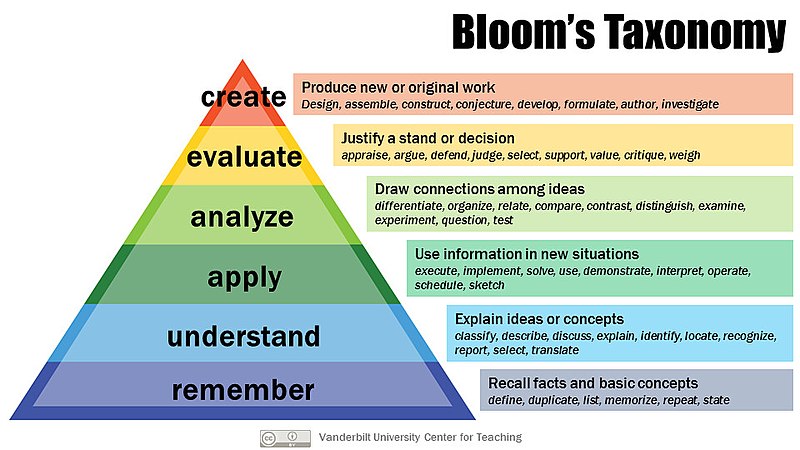Do you remember when your child first started talking? It may have felt like there was a never-ending supply of “why, why, why?” It was not enough to simply know what things were. There was a curiosity to understand how things work.
The same principle applies in teaching lessons when homeschooling your kids. There is the knowledge that they are meant to identify, while others that they should be able to explain.
This is where Bloom’s Taxonomy – a framework used by educators to help define the learning goals – comes in. Through the use of Bloom’s Taxonomy verbs, you can ensure that the homeschooled child gets a well-rounded understanding of the lesson.
What is Bloom’s Taxonomy?
This framework was developed by Benjamin Bloom, an educational psychologist, to provide a reference to the type of critical thinking required from the student. It has six levels, with the bottom being the most basic form of learning. Higher levels require more complicated understanding.
Bloom’s theory is that it is important to know the build the foundations first, before moving up to the higher levels. For educators like homeschooling parents, this scaffolding of knowledge can be used as an effective guide to ensure mastery of a lesson.
Levels of Bloom’s Taxonomy
Level: Remembering
Verbs: Choose, define, label, list, match, name
Also known as the knowledge level, the student is expected to be able to recall facts or concepts. The expectation from the student is that he or she should remember what they were taught. Examples are being able to memorize important dates or being able to define certain words.
Level: Understanding
Verbs: Compare and contrast, explain, summarize, classify
At this level, students should demonstrate comprehension of the lesson. They should be able to interpret what they have learned. For example, the student should be able to tell the main idea of an essay or explain what makes a certain animal is a reptile and not a mammal.
Level: Applying
Verbs: Solve, apply, modify, choose, construct
In Bloom’s Taxonomy, applying means that the student should be able to use the knowledge that they have. This requires more sophisticated thinking because the answer to the question is not in the original lesson presented to them. Instead, the student would have to utilize what they learned in new situations.
At this level, students may be asked to pretend to be a scientist and decide on the best laboratory procedure to use to achieve an intended goal.
Level: Analyzing
Verbs: Infer, discover, examine, survey, conclude
Students should be able to show that they can examine the information they learned and then infer conclusions from it using their ideas. Some of the assessments associated with this level are identifying patterns and finding evidence.
For example, the educator can ask what motivated a character to act the way he or she did. The student would have to consider the details of the story and come up with conclusions about the character’s traits.
Level: Evaluating
Verbs: Appraise, decide, judge, agree, choose
At this level, learners are supposed to predict or theorize based on what they learned. They need to have understood enough of the lesson to develop their judgment on the information given.
For example, a student may be asked to use historical data to predict an outcome in the future.
Level: Creating
Verbs: Construct, create, formulate, imagine, modify
At the highest level, creating requires students to know enough of the lesson to come up with new ideas 0f their own. They must be able to understand enough information and combine them to propose a different solution.
For example, homeschoolers can propose a suggested policy to combat climate change.
Bloom’s taxonomy verbs are helpful to homeschoolers because they can help clarify the type of learning the student should be doing. For educators, having differentiated levels through this framework can be a guide in making sure that every level of critical thinking is tackled so there is complete comprehension.
Source: Armstrong, Patricia._“Bloom’s Taxonomy.”_ Center for Teaching, Vanderbilt University, 13 Aug. 2018.

